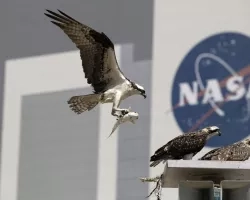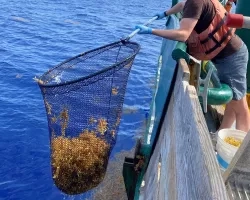A PARTNERSHIP OF CONCERNED SCIENTISTS IS HELPING THE ENDANGERED CHINOOK SALMON
Few things in nature are as impressive as watching salmon valiantly leap upstream through raging rivers to spawn their next generation. Their journey can be thousands of kilometers long, and once completed, most salmon species die within a week after spawning. The largest of the Pacific species, the Chinook salmon are an important food source for marine mammals, bears, birds, and other fish. Along the California coast, however, their population is declining due to threats from overfishing, habitat loss, and human development.

Dams and water diversions in particular pose a significant threat to the salmon that spawn in Northern California rivers, as they block access to the historical spawning areas, and also provide water that can be too warm downstream to maintain the fish’s viability. “When water reaches certain temperatures it is lethal to developing embryos,” explained Eric Danner, a research ecologist with NOAA’s Southwest Fisheries Science Center. “Warmer temperatures result in higher metabolic demands within the egg, and they use up the available dissolved oxygen in the water and die.”
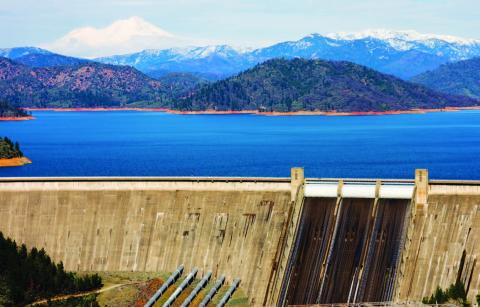
Since 1991, the Sacramento River’s Shasta Dam has had a temperature control device that allows dam managers to selectively withdraw water of various temperatures from different elevations in the reservoir, and then channel it through the turbines to generate electricity. Despite the innovation, the temperature of the water released from the dam can still impact ecosystems many kilometers downstream; and until recently, managers did not have the data to see the small-scale details and the long-term effects of their releases.
In an effort to change that, a joint NASA and NOAA project developed a model called the River Assessment for Forecasting Temperature (RAFT). RAFT integrates medium-scale weather information and ecological data to not only provide support for daily dam operations, but also to forecast river temperatures well downstream from release facilities. “In the past, we could only model water temperatures at coarse time steps at some particular location on the river,” Danner said. “RAFT now includes the entire river at sub-hourly time steps.”
For the Chinook salmon, water temperature is the key to survival. In the laboratory, research has indicated that a river temperature of about 14°C or less protects eggs from dying in the spawning nests, called redds. Redds are more vulnerable to temperature than any other stage of salmon development, and the “winter run” Chinook variety are the most threatened because they lay their eggs in the summer, when the river water is at its warmest.
In the wild however, the team discovered that due to environmental stressors, Chinook salmon redds need the water to be even cooler than what was considered survivable in the lab, and RAFT has helped compensate for this disparity. “We used a retrospective analysis to fit a model of egg survival that better explains why survival was lower than what you would expect from laboratory experiments,” noted Danner. “We took the known locations of the salmon redds during those years, the thermal exposure from RAFT, and the number of surviving juveniles observed downstream to fit the survival model.”
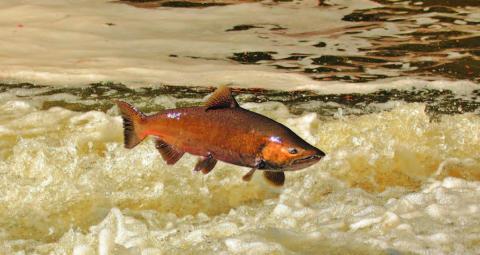
This analysis has also shown a large discrepancy in how the Chinook salmon have been faring over the decades. Danner confirmed this finding and added, “We have applied this approach to the past 25 years to estimate the temperature-dependent egg mortality during each year—in some years there was zero mortality, in others it was as high as 95 percent.” And in recent years, the historic California drought has left so little cold river water available that concerns for the salmon have risen again.
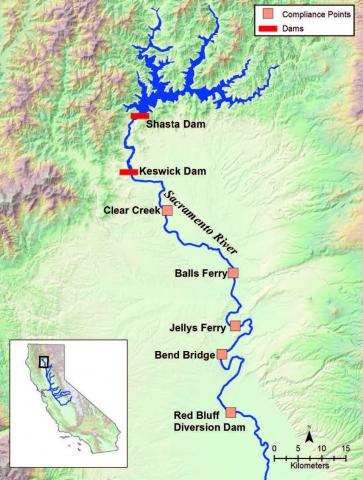
There is some good news for the endangered Chinook, though. The project team has adjusted RAFT to provide forecasts of water temperature over seasonal time periods in addition to the much shorter time periods needed for day-to-day dam maintenance. Managers can now see how temperatures will evolve over the warm summer months under a variety of water release scenarios, and can balance the cold water withdrawals required for salmon survival against the water needs of agriculture. “RAFT can take the planned operations for the coming season to estimate water temperatures and their associated impacts on eggs,” Danner remarked. “This would not be possible without the comprehensive space and time coverage of the model.”
Eric Danner leads this project.
